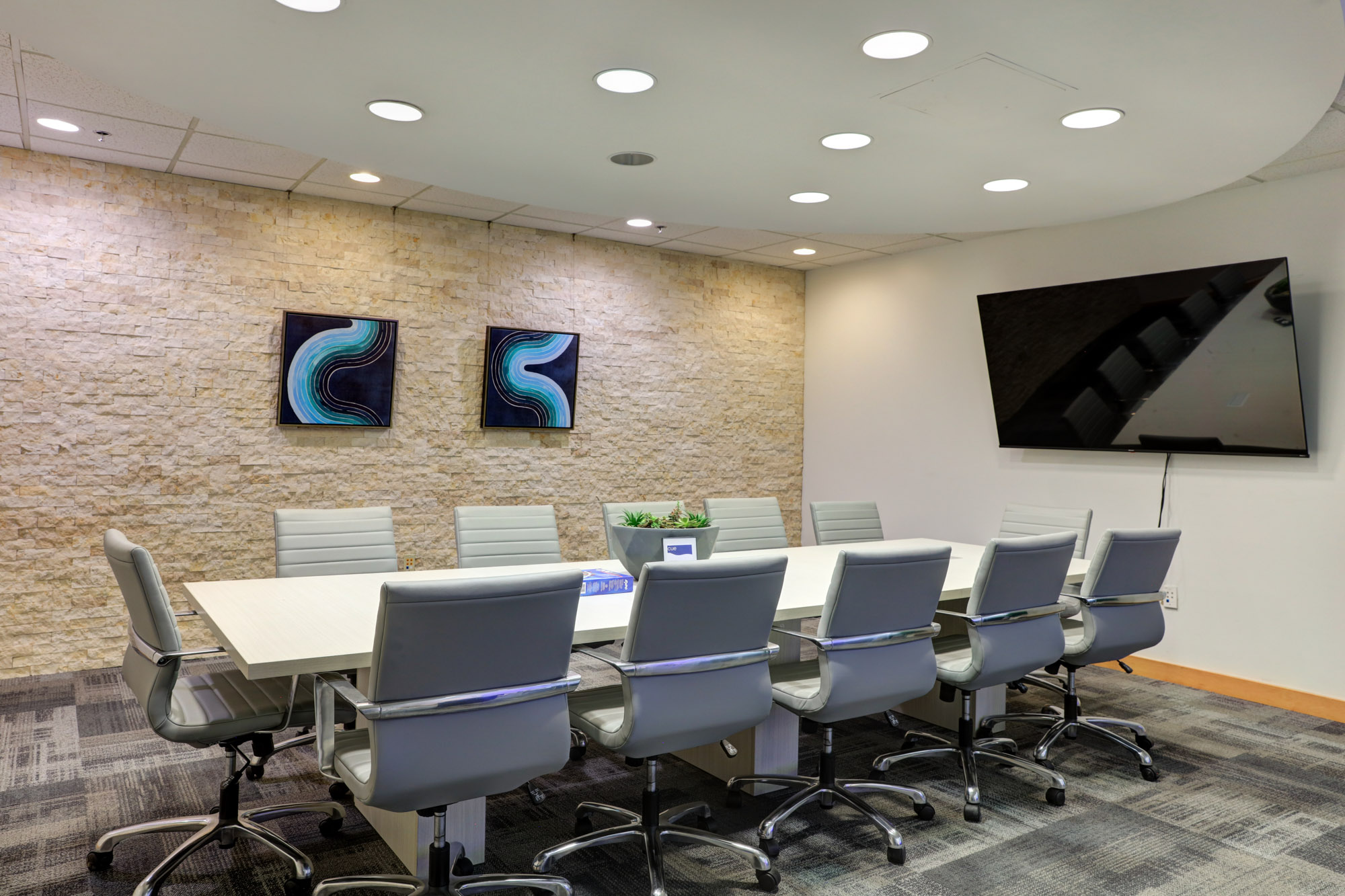Workplaces have changed a lot in recent years. Traditional offices with fixed desks and long commutes are no longer the only option. The COVID-19 pandemic sped up the shift to remote work and flexible schedules, and there’s no going back.
As we move into 2025, work is still evolving. Companies are redesigning shared office spaces to better fit employee needs and business demands. Hybrid work models, a stronger focus on employee well-being, and smart office technology are shaping the future. Businesses that adapt to these changes will have an advantage, attracting top talent and improving efficiency.
Table of Contents
How Workplaces Are Adapting to Change
Workplaces are changing fast, with more companies moving away from traditional offices. Coworking space for small businesses offers a flexible, cost-effective alternative, especially for small businesses and startups looking to grow without long-term leases. Companies seeking scalability and collaboration are opting for shared work environments that foster productivity and innovation.
In this article, we’ll explore the key trends shaping the future of office spaces—what’s changing, why it matters, and how companies can adapt to stay ahead. From hybrid work models to smart office technology and employee-centric designs, these trends will define the modern workplace.
Hybrid Work Models
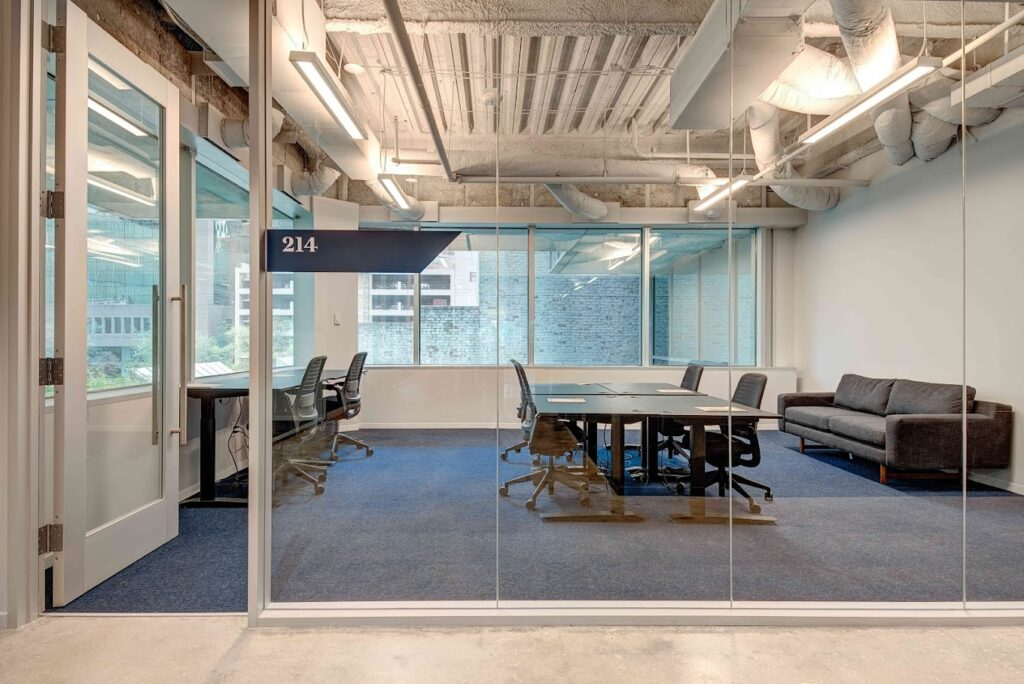
The pandemic has ushered in a new era of flexibility in work arrangements. Hybrid work models, which blend in-office and remote work, have gained popularity. This trend is likely to continue as companies recognize the benefits of providing employees with a choice. A hybrid approach can improve work-life balance, increase productivity, and help attract and retain top talent.
Office Reimagined
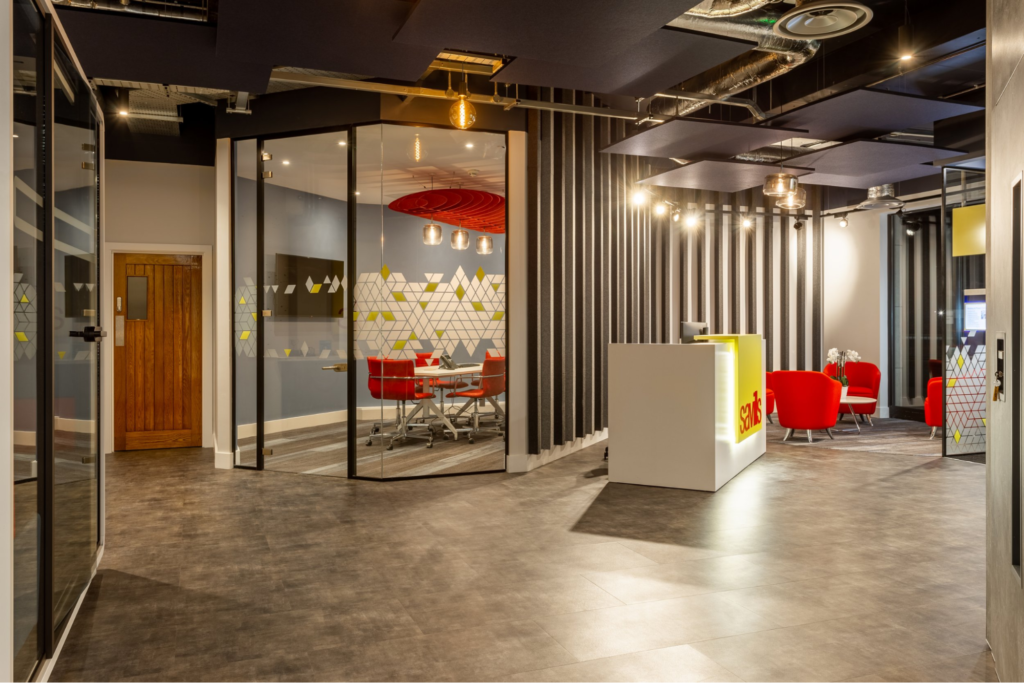
The traditional cubicle-filled office is evolving into a more flexible, adaptable space. Companies are redesigning offices to be collaborative hubs rather than merely places to work. Open-plan layouts, shared workspaces, and dedicated collaboration spaces are becoming the norm. These layouts promote communication, teamwork, and creativity among employees.
Wellness and Sustainability
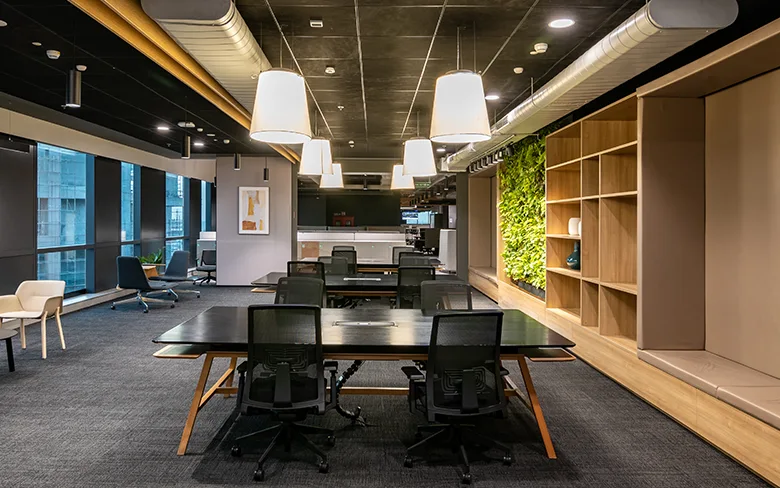
Employee well-being is gaining prominence as a priority. Offices will increasingly focus on creating healthy work environments by incorporating elements like natural lighting, ergonomic furniture, and spaces for relaxation or meditation. Sustainable office design is another key aspect, with offices striving to reduce their environmental footprint through energy-efficient designs, renewable energy sources, and eco-friendly materials.
Technology Integration
The future office will be deeply intertwined with technology. Artificial intelligence (AI), Internet of Things (IoT), and automation will play crucial roles. AI can optimize office space usage, schedule meetings, and personalize work environments. IoT devices will create smart offices that adjust lighting, temperature, and air quality based on employee preferences, enhancing comfort and productivity.
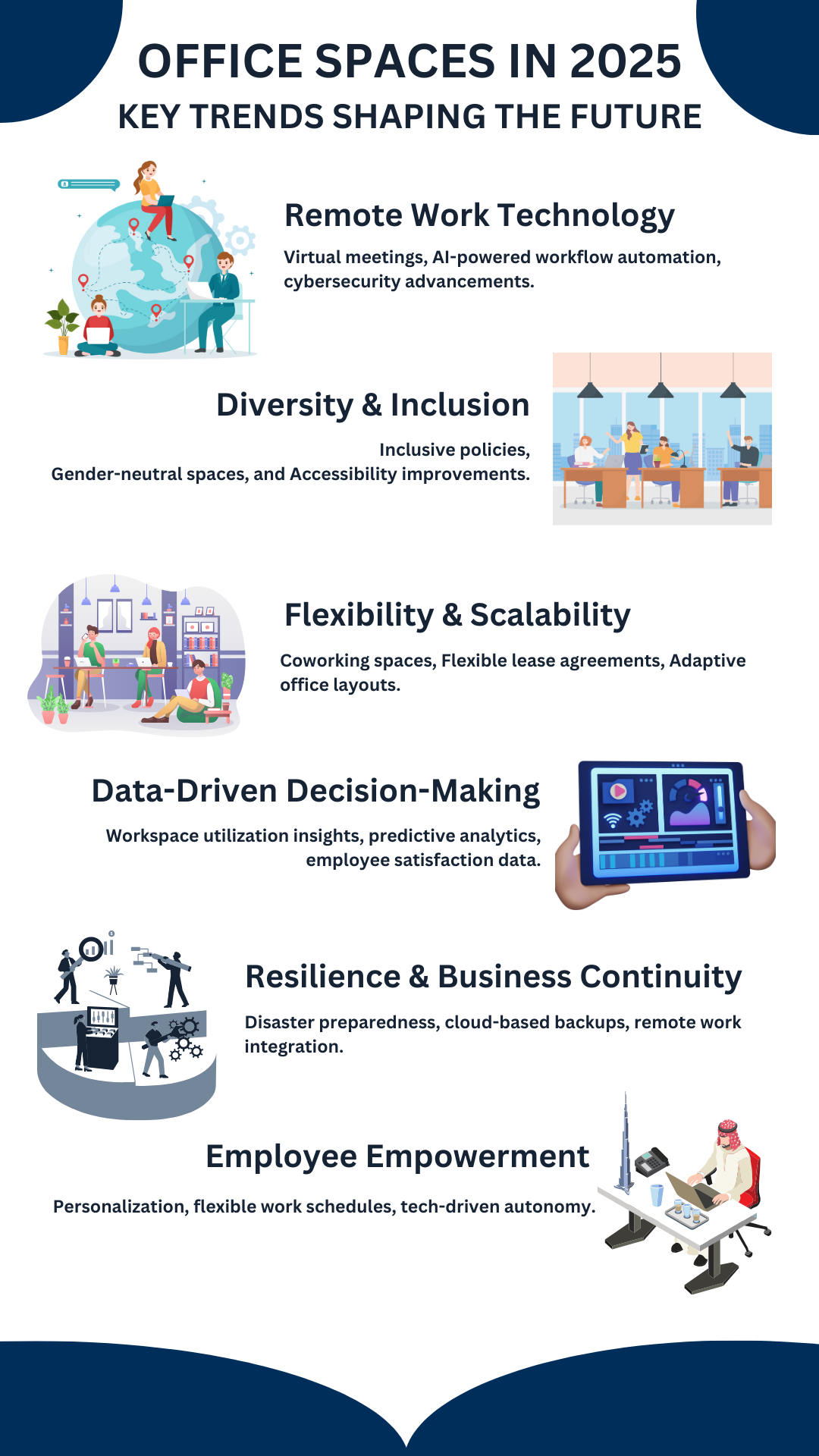
Remote Work Technology
Even with a hybrid work model, remote work will remain a key part of the future. Companies will invest in cutting-edge technologies to improve remote work, ensuring virtual meetings, collaboration tools, and cybersecurity run smoothly and efficiently. This will enable employees to work efficiently from anywhere in the world.
Diversity and Inclusion
The future of office spaces will prioritize diversity and inclusion. Companies are recognizing the value of diverse teams and will design their workplaces to be more inclusive. This includes accessible facilities, gender-neutral spaces, and policies that support underrepresented groups.
Flexibility and Scalability
Businesses are realizing the importance of adaptability in uncertain times. Office spaces will be smartly designed with flexibility in mind, allowing companies to scale up or down as needed. Flexible lease agreements and business coworking spaces will become essential options for companies looking to maintain agility.
Data-Driven Decision-Making
Data analytics will continue to shape office design and operations. Companies will use data to analyze workspace utilization, employee productivity, and preferences. This is especially beneficial for businesses exploring a community workspace for startups, as it helps them optimize layouts, resources, and employee satisfaction.
Resilience and Business Continuity
Recent global events have highlighted the need for resilience and business continuity planning. Future office spaces will prioritize disaster preparedness and remote work capabilities. Whether through flexible leases or office rental options, companies will seek adaptable solutions to ensure seamless operations during disruptions.
Employee Empowerment
The future office will empower employees to have more control over their work environment. This could involve flexible workstations, the ability to book meeting spaces easily, and the flexibility to choose when and where they work. Businesses investing in office spaces will focus on creating dynamic environments that support both productivity and well-being.
Looking ahead to office trends in 2025, businesses that embrace these changes will be more likely to thrive. The future of office spaces is about more than just providing a place to work—it’s about creating an environment that promotes flexibility, well-being, and innovation.
By adopting smart office technology, sustainable practices, and fostering workplace innovation, companies can create spaces that not only attract top talent but also boost employee productivity and support long-term success.
FAQs
- How can office design improve employees’ working life in 2025?
Office designs that incorporate natural lighting, ergonomic office furniture, and flexible workspaces will enhance employees’ well-being and contribute to a healthier working life. This approach promotes comfort, reduces stress, and boosts overall productivity.
- What impact will hybrid work models have on company culture?
Hybrid work models provide employees with the flexibility to work both in the office and remotely. This flexibility helps to create a more inclusive company culture by encouraging employees to feel valued regardless of their physical location, leading to stronger engagement and collaboration.
- What changes can business leaders expect in office space design?
Business leaders will see a shift towards flexible office spaces that support diverse work styles, offering features like adaptable meeting rooms, collaborative workstations, and scalable layouts to suit fluctuating employee numbers and working hours.
Related Posts
Maximize Collaboration and Creativity with High-Tech Business Centers for Rent
How Cue’s Community Workspace Solves the Challenges of Growing Businesses
Transform Your Meetings with Smartly Designed Conference Rooms in Dallas

